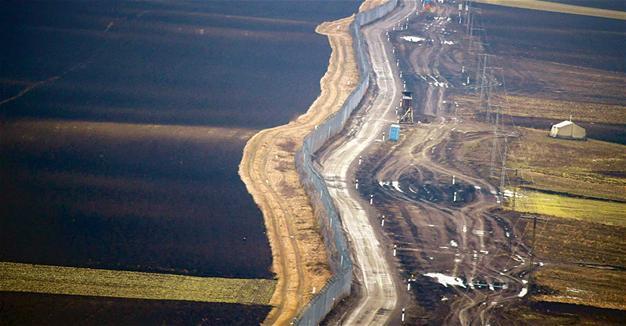Hungary starts construction of second border fence
BUDAPEST – Reuters

Hungary has begun building a second line of fence along its southern border with Serbia, a government spokesman said on Feb. 27, a move likely to exacerbate criticism from some of the country’s European Union partners.
Hungarian Prime Minister Viktor Orban’s right-wing government considers migration to be one of the largest threats to the status quo in the EU. But officials in Brussels and some other EU centers are distressed by some of his go-it-alone policies.
A European Parliament committee, for example, was due on Feb. 27 to discuss the state of fundamental rights in Hungary. Orban was also a rare EU leader to endorse U.S. President Donald Trump, who is seeking to build a wall along the U.S.-Mexico border.
A barbed-wire fence is already in place, erected in 2015, when Hungary was part of the main overland route for hundreds of thousands of migrants and refugees, many fleeing the war in Syria.
It effectively blocked that route to Germany, where many were heading, but Hungary has said a second fence would make the barrier more effective and hold back migrants while processing their asylum requests.
Although the pressure on the border is far from the peak of the 2015 crisis, border patrols still prevent hundreds of illegal border crossings per day and escort back dozens of migrants who manage to break through, the government says.
Poles for the second fence are already standing near the border station Kelebia, and construction materials have also been shipped to the border elsewhere.
Orban’s chief of staff, Janos Lazar, last week said the government had earmarked 38 billion forints ($130 million) for the fence and containment camps to hold migrants.
He said the second border fence, which will extend only to the Hungary-Serbia border for now, would be built as soon as the weather permitted and would be standing by the end of spring.
Rights groups Hungarian Helsinki Committee and Human Rights Watch on Feb. 24 sent a complaint to EU Migration Commissioner Dimitris Avramopoulos about current practices and proposed legal changes.
“The European Commission should not stand by while Hungary makes a mockery of the right to seek asylum,” Human Rights Watch deputy director Benjamin Ward said.
“Using transit zones as detention centers and forcing asylum seekers who are already inside Hungary back to the Serbian side of the razor-wire fence is abusive, pointless, and cruel.”
The Hungarian government’s practice of allowing only 10 people in per day also creates a dangerous bottleneck along the Hungary-Serbia border in sometimes inhumane conditions, the rights groups added.
The government rejected that in an emailed reply to Reuters.
“Human Rights Watch... again tries to denigrate those serving at the border,” it said. “Hungary was among the first to honor the EU’s rules, protects the Schengen borders, stops, registers and separates refugees from economic migrants.”
 Hungary has begun building a second line of fence along its southern border with Serbia, a government spokesman said on Feb. 27, a move likely to exacerbate criticism from some of the country’s European Union partners.
Hungary has begun building a second line of fence along its southern border with Serbia, a government spokesman said on Feb. 27, a move likely to exacerbate criticism from some of the country’s European Union partners.